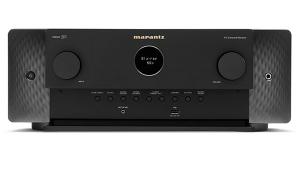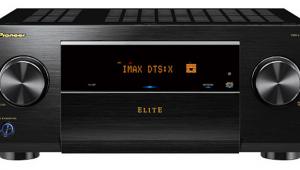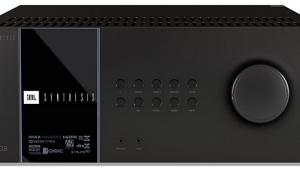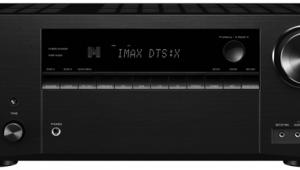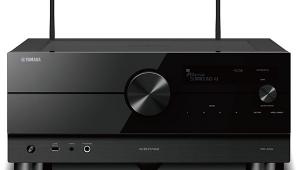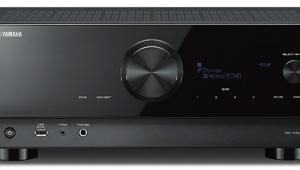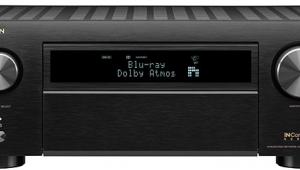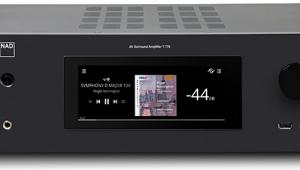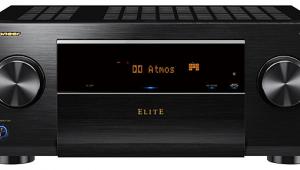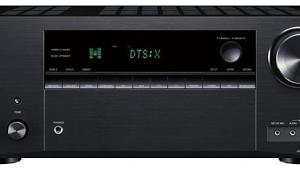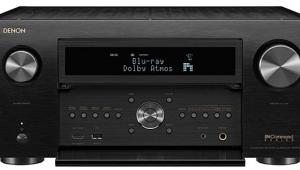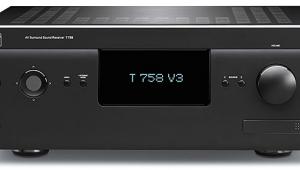Yamaha Aventage RX-A3060 A/V Receiver Review Page 2
DTS:X Times Three
The RX-A3060 is audibly and recognizably a Yamaha, with a crisp top end that keeps its cool under duress and effortless dialogue reproduction. Dynamically, this is a receiver, not a muscle amp, but it should have no trouble running speakers whose sensitivity is on the low side of average, as you’d expect from a $2,000-plus receiver.
 For movie soundtracks with height channels, I favored the receiver’s Standard movie mode, which the manual says “emphasizes the surround feeling without disturbing the original positioning of multichannel audio.” The result was some of the best 5.1.4 I’ve ever heard. What fascinated me was how differently each movie deployed my system’s four height speakers.
For movie soundtracks with height channels, I favored the receiver’s Standard movie mode, which the manual says “emphasizes the surround feeling without disturbing the original positioning of multichannel audio.” The result was some of the best 5.1.4 I’ve ever heard. What fascinated me was how differently each movie deployed my system’s four height speakers.
Giving my growing Atmos library a rest, I settled in to watch a trio of DTS:X titles. In London Has Fallen, the strategy was to fill the overhead channels constantly and aggressively. Some effects—let’s say, fighter jets zooming by—offered height-specific sensations, but most of the height effects just gave basic surround envelopment a little lift. The first half-hour challenged the Yamaha’s dynamics with a barrage of (fictional) terrorist attacks on London landmarks.
Whiskey Tango Foxtrot sends Tina Fey to Afghanistan as a war reporter, a role that takes full advantage of both her comedic and dramatic gifts. Here, height effects were more differentiated as height-specific. A recurring nightclub scene showed off the receiver’s extraordinary aptitude for envelopment. It simulated the space believably and aced the phat throb of bass waves bouncing off the walls of that conjured space.
In The Big Short, the sound mixer got inside the head of Christian Bale’s socially challenged investment genius, using snatches of height-enhanced music to inveigle the listener into his peculiar walled-off consciousness. This was a surprising and innovative exercise in using height channels for character development. Dialogue in this high-spirited movie veered from conspiratorial sotto voce to fullthroated yelling, and back again, demonstrating (for the umpteenth time in my experience) how well a Yamaha can deliver low-level intelligibility.
Fantastique Voyage
Berlioz’s Symphonie fantastique came on a 5.0-channel hybrid SACD with Daniele Gatti leading the Royal Concertgebouw Orchestra in its own hall, with which I am familiar. I compared the receiver’s Straight mode (with YPAO) with its Pure Direct mode (without YPAO). Although I’d found that YPAO caused a fair amount of tonal shift during informal warmingup demos, it was less pronounced with this high-resolution content. The luminous strings in this deliberately light-textured recording were better imaged in room-corrected Straight, warmer in uncorrected Pure Direct—but these were marginal differences. Either way, the Yamaha delivered this best-case material gorgeously, reminding me of the hall’s stately reverb. A great receiver makes all of its most significant modes sound good.
Toward the Curve is a series of pieces for “piano + surround sound electronics” by various composers at the Oberlin Conservatory, performed by Thomas Rosenkranz for a 5.0-channel Pure Audio Blu-ray (coupled with a CD). Imagine Keith Jarrett improvs embellished with occasional quotes from well-known classical works; then imagine John Cage’s acoustically generated prepared-piano sounds and a riot of electronic samples rocketing around the soundfield. The receiver’s contribution was to anchor the lively natural piano in the front of the soundfield so that the acoustic and electronic effects could frolic around it. While this material would blow minds on any decent system, the Yamaha handled the acoustic instrument’s rich overtones in an especially vivid and painterly way.

The Beatles’ Hey Jude LP (most of whose contents ended up on the Past Masters compilations) confounded my expectations for the appropriate mode. My vinyl pressing, at least, is somewhat bright and thin. And my early spins were on collegeera speakers with polite paper-diaphragm tweeters and no room correction. So I assumed that the warming effect and room-agnostic ideology of Pure Direct would be the best way down memory lane. But I hadn’t reckoned on the room-corrected Straight mode putting some extra zing into the psychedelic drone of “Rain.” It also moved the bottom end of Sir Paul’s bass into the subwoofer, the ideal home it always deserved.
The Yamaha RX-A3060 starts with an amp that sounds good in every mode that matters—the basis of my five-star Audio Performance rating—with enough channels to run all but the more elaborate configurations of surround sound as it exists today. Added to that is a solid wireless feature set, including the unique plus of the company’s own MusicCast multiroom capability, which turns the Yamaha into the musical nerve center for the entire home. The result is a state-of-theart, top-of-the-line receiver. Feast your ears.
